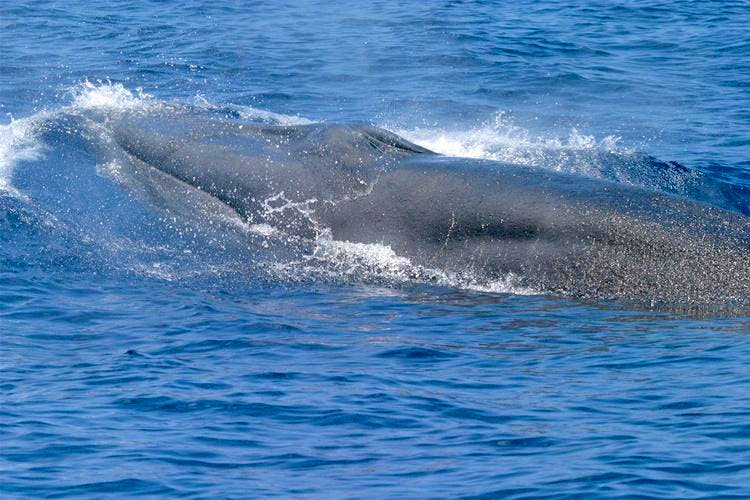When we think of wildlife off the 8,400 miles of Florida’s coastline, sea turtles or dolphins often come to mind while whales rarely surface. They should rise to the forefront of our thoughts, however, as one of the most endangered animals in North America lives off each coast: the North Atlantic right whale to the east and Rice’s whale to the west.
Every year, pregnant North Atlantic right whales travel from their feeding grounds in Canada and New England to calving grounds off the coasts of the Carolinas, Georgia and Florida. Floridians can view these large baleen whales from Fernandina Beach to Cape Canaveral from December to March. Florida’s coastal waters are relatively warm, calm and shallow compared to much of the whale’s range, providing safety and respite for mothers and newborn calves, which benefit from increased survival rates in warmer waters.
Although North Atlantic right whale protections date back to the 1930s, the species has not recovered. After years of small recovery gains, the right whale has been declining since 2010. Only approximately 360 whales remain today, of which only 70 or so are reproductive females.
Different Tales for Different Whales
Off Florida’s Gulf Coast, a different whale lives a different life — one that hasn’t been studied for nearly as long. The Rice's whale is the only species of large whale endemic to the United States, and the sole year-round resident baleen whale in the Gulf of Mexico.
The Rice’s whale was only identified as its own species in 2021, meaning there’s a lot we don’t know about its behavior. What we do know is that the Rice’s whale resides primarily in DeSoto Canyon, an underwater canyon off Florida’s western coast. The species also relies on habitat in waters off the coasts of Alabama, Mississippi, Louisiana and Texas. The species and its habitat were affected more than any other offshore cetacean following the Deepwater Horizon disaster, losing nearly 20% of the population.
As year-round residents of the Gulf of Mexico, Rice’s whales are dependent on food sources consisting mostly of small, schooling fish. The concentration of Rice's whales in Florida waters appears to be driven by high biomass (lots of fish) and an abundance of tiny marine algae. North Atlantic right whales, by comparison, primarily feed on tiny, fat-rich crustaceans found in cold waters from the Gulf of Maine to Atlantic Canada, a food source that has shifted even further north at an estimated five miles per year due to climate change.
As both Rice’s whales and right whales may be considered Florida residents, the state has been a leader in conservation efforts alongside advocacy efforts of our partners. Our work, however, is far from finished. Rice’s whales await a final critical habitat designation to provide better protections for their fragile home. Right whales await action on a long-delayed vessel speed rule that will establish more speed zones and mandate seasonal speed limits to protect this critically endangered species. A great deal of what must be done to protect these aquatic state residents is up to the federal government, but it’s also up to the Floridians who can join local action groups and advocate for a healthier future for their aquatic neighbors. It takes a whole state to keep Florida’s species thriving — no matter what coast they swim along.











